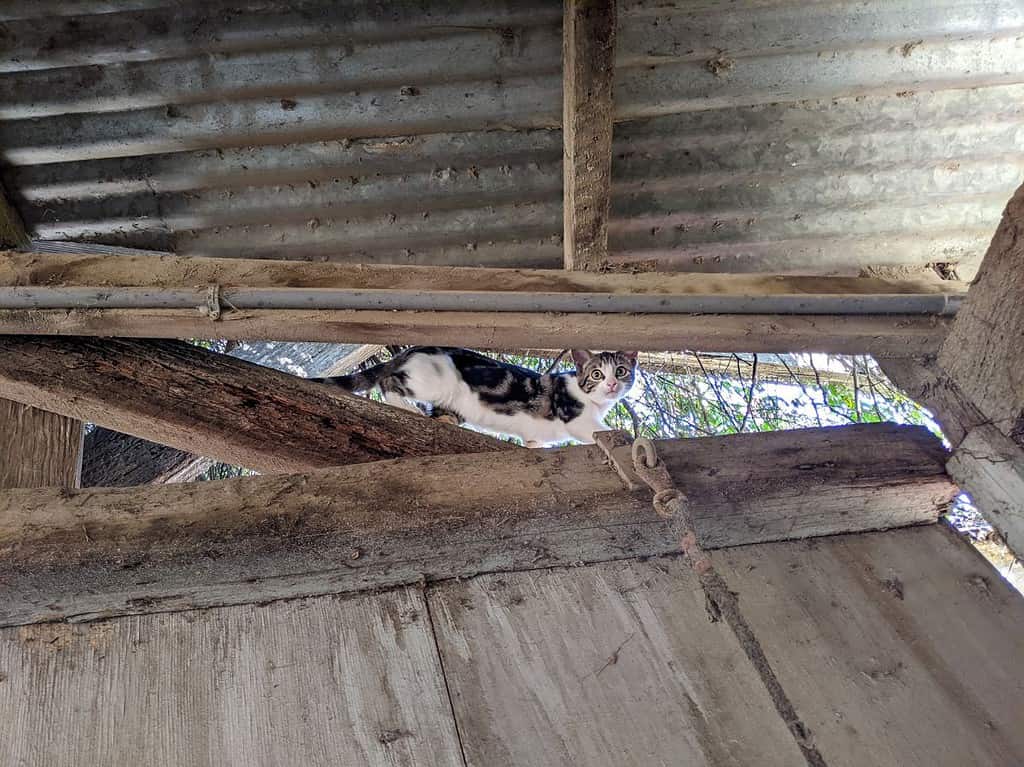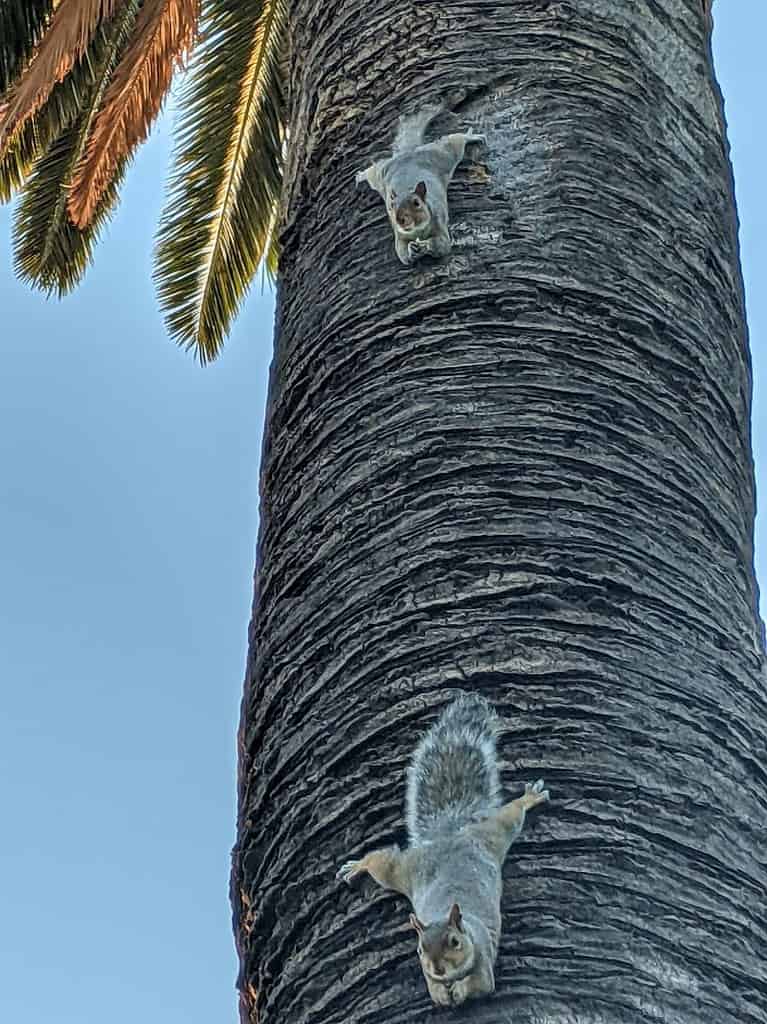The adage “what goes up must come down” doesn’t always apply when it comes to cats and tree climbing.
Cats love to view the world from up high.
Outside, the natural curiosity of cats and their need to be elevated drives them to climb trees. For wild cats, trees (or cactus for bobcats in the desert) serve as vantage points to survey their surroundings as well as an escape from ground predators. These instinctive behaviors are a big reason why cat trees and other high perches inside your house are so popular with cats.
The physiology of cats, from their strong leg muscles to their flexible spines, makes cats agile climbers. Cats also possess retractable claws that act like built-in grappling hooks, helping them secure a sturdy grip while climbing.

Where this physiology works against cats is in the descent back down the tree.
The cat’s spine flexibility and muscular structure, which contribute to their graceful movements on ground and climbing upwards, are not as useful when they try to go headfirst down a tree. Their curved claws, which helps the cat to grasp onto limbs climbing up, no longer provides the same security on the way down.
For some species of tree-climbing animals, this is solved by being hypermobile (also known as being double-jointed). If you’re ever seen a squirrel race up and down a tree with ease, you have seen hypermobility in action. Hypermobility allows squirrels to rotate their ankles 180° in order to orient their claws so they can grasp the bark of the tree even while upside down.

Not many cat species are hypermobile
So, in order for a domestic cat to be able to descend a tree head-first, they would need to be hypermobile. Which they are not.
Hypermobility as an adaptation is relatively rare among animals and even rarer among cat species. There are only three known species of wild cats that are hypermobile. And there are no breeds of domestic cats that are hypermobile.
If cats aren’t hypermobile, how can they climb back down a tree?
Without hypermobility, the solution for cats to get back down out of a tree is to climb back down backwards.
This technique involves keeping their head upwards, and using their rear legs to scrabble down the tree. This also keeps the claws in the proper orientation needed to securely grasp on to the bark of the tree as the cat descends.

The sticking point to this strategy is that climbing back down trees is a learned skill among cats. Cats learn by copying what their mother does or by watching other cats. Sometimes they learn while observing their owners. It’s how some cats can learn tricks like how to open doors.
If a cat has never watched another cat get back down out of a tree, they may lack the skills to extricate themselves from a tree. These untrained cats often get stuck up high in the tree or up utility poles, howling in fear until some human comes to rescue them.






